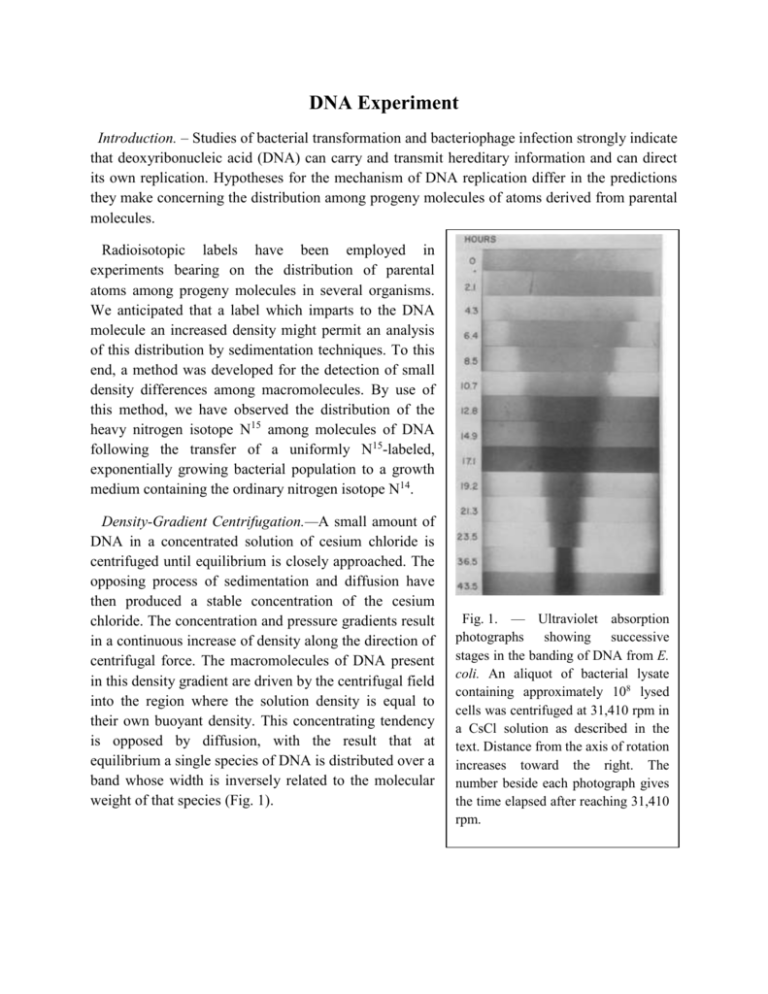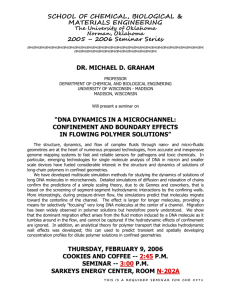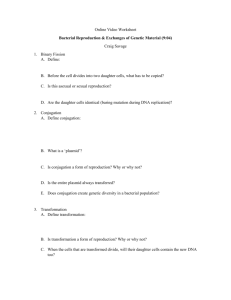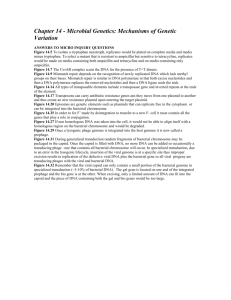DocX - People.vcu.edu
advertisement

DNA Experiment Introduction. – Studies of bacterial transformation and bacteriophage infection strongly indicate that deoxyribonucleic acid (DNA) can carry and transmit hereditary information and can direct its own replication. Hypotheses for the mechanism of DNA replication differ in the predictions they make concerning the distribution among progeny molecules of atoms derived from parental molecules. Radioisotopic labels have been employed in experiments bearing on the distribution of parental atoms among progeny molecules in several organisms. We anticipated that a label which imparts to the DNA molecule an increased density might permit an analysis of this distribution by sedimentation techniques. To this end, a method was developed for the detection of small density differences among macromolecules. By use of this method, we have observed the distribution of the heavy nitrogen isotope N15 among molecules of DNA following the transfer of a uniformly N15-labeled, exponentially growing bacterial population to a growth medium containing the ordinary nitrogen isotope N14. Density-Gradient Centrifugation.—A small amount of DNA in a concentrated solution of cesium chloride is centrifuged until equilibrium is closely approached. The opposing process of sedimentation and diffusion have then produced a stable concentration of the cesium chloride. The concentration and pressure gradients result in a continuous increase of density along the direction of centrifugal force. The macromolecules of DNA present in this density gradient are driven by the centrifugal field into the region where the solution density is equal to their own buoyant density. This concentrating tendency is opposed by diffusion, with the result that at equilibrium a single species of DNA is distributed over a band whose width is inversely related to the molecular weight of that species (Fig. 1). Fig. 1. — Ultraviolet absorption photographs showing successive stages in the banding of DNA from E. coli. An aliquot of bacterial lysate containing approximately 108 lysed cells was centrifuged at 31,410 rpm in a CsCl solution as described in the text. Distance from the axis of rotation increases toward the right. The number beside each photograph gives the time elapsed after reaching 31,410 rpm.











